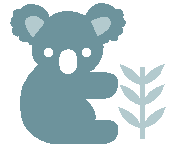FM.A.1 MOVES EYES TOWARDS AN OBJECT AND FIXATES FOR A FEW SECONDS
This means that the child looks at something (briefly) – a step forward from the seemingly unfocused gaze of the newborn baby. A parent’s face is the first ‘object’ to attract the child’s attention and remains for a long time the most important thing in his world. So this is where we begin teaching – using talking and smiling to encourage the child to look at his parents’ faces. Once this is achieved, objects can be introduced.
How to Assess
Materials: Bright, colourful toys that make no sound.
Method: Shake the object slightly about 25 cm from the child’s face, just to the side of his line of vision.
Score plus if the child moves his eyes towards the object and looks at it for a moment.
How to Teach
Use colourful objects – the more variety the better. Include a simple picture of a face (a hand-drawn one is fine).
Get into the habit now of saying ‘Look’ to attract your child’s attention. He won’t understand now, but he will in time.
Work through the steps below and select as your objective the step where your child first experiences difficulty. At the same time, work intensively on the early steps in Receptive Language Sequence A (RL.A), which will teach your child to look at you. You will find that some of the teaching steps overlap.
- Looks at your face, when placed immediately in his line of vision, about 25 cm away (talk to attract his attention).
- Looks at a drawn face, when placed immediately in his line of vision.
- Looks at an object, when placed immediately in his line of vision.
- Looks at a face placed just outside his line of vision, when you help him to turn his head by gently guiding him with the palm of your hand.
- Looks at an object placed just outside his line of vision, when you help him to turn his head, as above.
If your child succeeds at all the steps shown above but still does not reach the main objective, make sure that you are giving him plenty of time to respond before you step in to help him. Experiment with different objects, and try placing the object closer to, or further from, his face. Spend time observing him to see what he will look at spontaneously.
Playtime and Round-the-house Activities
Make sure your child always has something to look at. Use a frame or drying rack to suspend objects around him as he lies on the floor or sits propped in his chair. Place objects in his cot or bassinet – a drawn face is ideal here. Hang mobiles in front of windows, so that the changing fight pattern catches his attention. In the garden, place him where he can see the foliage moving against the sky. Place him where he can watch you – his focal distance is short, so try putting his chair on the kitchen bench as you wash up. The best teaching times are when you are with him – talk to him as you change, feed and cuddle him to encourage him to look at you.
Remembering and Extending
Once he has mastered the skill of looking, keep providing him with opportunities to practise. Vary the materials you show him – your kitchen cupboards will provide a host of interesting objects. You can gradually introduce smaller things, with subtler colours. Try placing things at different distances too.
